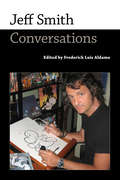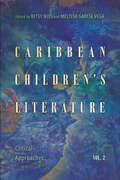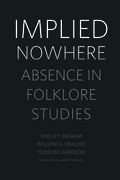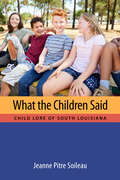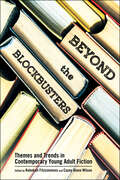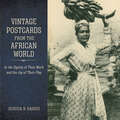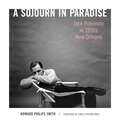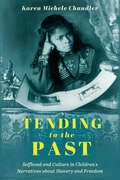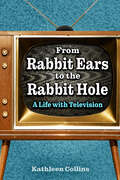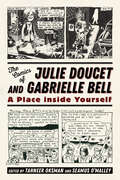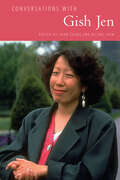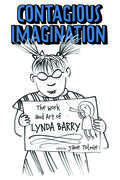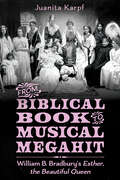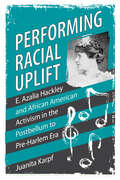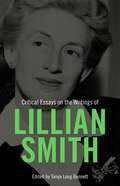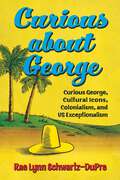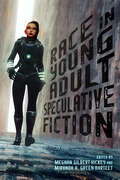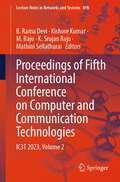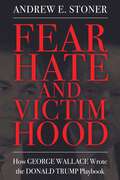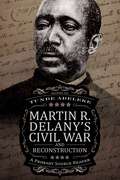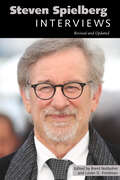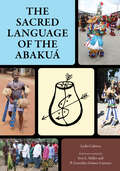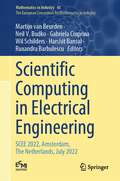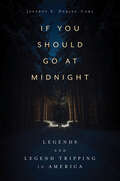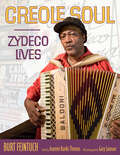- Table View
- List View
Jeff Smith: Conversations (Conversations with Comic Artists Series)
by Frederick Luis AldamaFirst with his magisterial fantasy Bone to his mind-bending, time-warping sci-fi noir RASL, Paleolithic-set fantasy Tüki: Save the Humans, arthouse-styled superheroic miniseries Shazam!, and his latest children’s book Smiley’s Dream Book, Jeff Smith (b. 1960) has made an indelible mark on the comics industry. As a child, Smith was drawn to Charles Schulz’s Peanuts, Carl Barks’s Donald Duck, and Walt Kelly’s Pogo, and he began the daily practice of drawing his own stories. After writing his regular strip Thorn for The Ohio State University’s student paper, Smith worked in animation before creating, writing, and illustrating his runaway success, Bone. A comedic fantasy epic, Bone focuses on the Bone cousins, white, bald cartoon characters run out of their hometown, lost in a distant, mysterious valley. The self-published series ran from 1991 to 2004 and won numerous awards, including ten Eisner Awards. This career-spanning collection of interviews, ranging from 1999 to 2017, enables readers to follow along with Smith's development as an independent creator, writer, and illustrator.
Caribbean Children's Literature, Volume 2: Critical Approaches (Children's Literature Association Series)
by Betsy Nies and Melissa García VegaContributions by Jarrel De Matas, Summer Edward, Teófilo Espada-Brignoni, Pauline Franchini, Melissa García Vega, Dannabang Kuwabong, Amanda Eaton McMenamin, Betsy Nies, and Michael ReyesCaribbean Children's Literature, Volume 2: Critical Approaches offers analyses of the works of writers of the Anglophone Caribbean and its diaspora—or, except for one chapter on Francophone Caribbean children’s literature, those who write in English. The volume addresses the four language regions, early children’s literature of conquest—in particular, the US colonization of Puerto Rico—and the fine line between children’s and adult literature. It explores multiple young adult genres, probing the nuances and difficulties of historical fiction and the anticolonial impulses of contemporary speculative fiction. Additionally, the volume offers an overview of the literature of disaster and recovery, significant for readers living in a region besieged by earthquakes, hurricanes, and flooding. In this anthology and its companion anthology, international and regional scholars provide coverage of both areas, offering in-depth explorations of picture books, middle-grade, and young adult stories. The volumes examine the literary histories of both children’s and young adult literature according to language region, its use (or lack thereof) in schools, and its place in the field of publishing. Taken together, the essays expand our understanding of Caribbean literature for young people.
Implied Nowhere: Absence in Folklore Studies
by Shelley Ingram Willow G. Mullins Todd RichardsonIn Implied Nowhere: Absence in Folklore Studies, authors Shelley Ingram, Willow G. Mullins, and Todd Richardson talk about things folklorists don’t usually talk about. They ponder the tacit aspects of folklore and folklore studies, looking into the unarticulated expectations placed upon people whenever they talk about folklore and how those expectations necessarily affect the folklore they are talking about. The book’s chapters are wide-ranging in subject and style, yet they all orbit the idea that much of folklore, both as a phenomenon and as a field, hinges upon unspoken or absent assumptions about who people are and what people do. The authors articulate theories and methodologies for making sense of these unexpressed absences, and, in the process, they offer critical new insights into discussions of race, authenticity, community, literature, popular culture, and scholarly authority. Taken as a whole, the book represents a new and challenging way of looking again at the ways groups come together to make meaning. In addition to the main chapters, the book also includes eight “interstitials,” shorter studies that consider underappreciated aspects of folklore. These discussions, which range from a consideration of knitting in public to the ways that invisibility shapes an internet meme, are presented as questions rather than answers, encouraging readers to think about what more folklore and folklore studies might discover if only practitioners chose to look at their subjects from angles more cognizant of these unspoken gaps.
What the Children Said: Child Lore of South Louisiana (Cultures of Childhood)
by Jeanne Pitre SoileauWinner of the 2022 Opie PrizeJeanne Pitre Soileau vividly presents children’s voices in What the Children Said: Child Lore of South Louisiana. Including over six hundred handclaps, chants, jokes, jump-rope rhymes, cheers, taunts, and teases, this book takes the reader through a fifty-year history of child speech as it has influenced children’s lives.What the Children Said affirms that children's play in south Louisiana is acquired along a network of summer camps, schoolyards, church gatherings, and sleepovers with friends. When children travel, they obtain new games and rhymes and bring them home. The volume also reveals, in the words of the children themselves, how young people deal with racism and sexism. The children argue and outshout one another, policing their own conversations, stating their own prejudices, and vying with one another for dominion. The first transcript in the book tracks a conversation among three related boys and shows that racism is part of the family interchange. Among second-grade boys and girls at a Catholic school, another transcript presents numerous examples in which boys use insults to dominate a conversation with girls, and girls use giggles and sly comebacks to counter this aggression.Though collected in the areas of New Orleans, Baton Rouge, and Lafayette, Louisiana, this volume shows how south Louisiana child lore is connected to other English-speaking places: England, Scotland, Ireland, Australia, and New Zealand, as well as the rest of the United States.
Beyond the Blockbusters: Themes and Trends in Contemporary Young Adult Fiction (Children's Literature Association Series)
by Rebekah Fitzsimmons and Casey Alane WilsonContributions by Megan Brown, Jill Coste, Sara K. Day, Rachel Dean-Ruzicka, Rebekah Fitzsimmons, Amber Gray, Roxanne Harde, Tom Jesse, Heidi Jones, Kaylee Jangula Mootz, Leah Phillips, Rachel L. Rickard Rebellino, S. R. Toliver, Jason Vanfosson, Sarah E. Whitney, and Casey Alane WilsonWhile critical and popular attention afforded to twenty-first-century young adult literature has exponentially increased in recent years, classroom materials and scholarship have remained static in focus and slight in scope. Twilight, The Hunger Games, The Fault in Our Stars, and The Hate U Give overwhelm conversations among scholars and critics—but these are far from the only texts in need of analysis.Beyond the Blockbusters: Themes and Trends in Contemporary Young Adult Fiction offers a necessary remedy to this limiting perspective, bringing together essays about the many subgenres, themes, and character types that have until now been overlooked. The collection tackles a diverse range of topics—modern updates to the marriage plot; fairy tale retellings in dystopian settings; stories of extrajudicial police killings and racial justice. The approaches are united, though, by a commitment to exploring the large-scale generic and theoretical structures at work in each set of texts. As a collection, Beyond the Blockbusters is an exciting entryway into a field that continues to grow and change even as its works captivate massive audiences. It will prove a crucial addition to the library of any scholar or instructor of young adult literature.
Vintage Postcards from the African World: In the Dignity of Their Work and the Joy of Their Play (Atlantic Migrations and the African Diaspora)
by Jessica B. HarrisFor over forty years, professor and culinary historian Jessica B. Harris has collected postcards depicting Africans and their descendants in the American diaspora. They are presented for the first time in this exquisite volume. Vintage Postcards from the African World: In the Dignity of Their Work and the Joy of Their Play brings together more than 150 images, providing a visual document of more than a century of work in agricultural and culinary pursuits and joy in entertainments, parades, and celebrations. Organized by geography—Africa, the Caribbean, and the United States—as well as by the types of scenes depicted—the farm, the garden, and the sea; the marketplace; the vendors and the cooks; leisure, entertainments, and festivities—the images capture the dignity of the labors of everyday life and the pride of festive occasions. Superb and rare images demonstrate everything from how Africans and their descendants dressed to what tools they used to how their entertainments provided relief from toil. Three essays accompany the postcards, one of which details Harris’s collection and the collecting process. A second presents suggestions on how to interpret the cards. A final essay gives brief information on the history of postcards and postcard dating and its increasing use and value to scholars.
A Sojourn in Paradise: Jack Robinson in 1950s New Orleans
by Howard Philips SmithJack Robinson made his name as a much-sought-after fashion and celebrity photographer during the 1960s and early 1970s, and his work is well documented in hundreds of pages of Vogue, the New York Times, and Life, as well as other publications. However, his personal life remains virtually unknown. In this study of Robinson and his photography, Howard Philips Smith takes an in-depth look at Robinson’s early life in New Orleans, where he discovered his passion for painting, photography, and the Dixie Bohemian life of the French Quarter. A Sojourn in Paradise: Jack Robinson in 1950s New Orleans features more than one hundred photographs taken by the artist, accompanied by detailed commentary about Robinson’s life in New Orleans and excerpts from interviews with the people who knew him when he lived there. Robinson’s photographs of New Orleans reveal the genesis of two unique and fascinating facets of the city’s history and culture: the creation of the first gay Carnival krewes who would make their own unique contribution to the rich cultural history of the city and the formation of the Orleans Gallery, one of the earliest centers of the contemporary art movement blossoming in 1950s America. This detailed study of Jack Robinson’s early life and photography illustrates the contributions of a gifted, gay artist whose quiet spirit and constant interior struggle found refuge in New Orleans, the city where he was able to find himself, for a time, free from society’s grip and open to exploring life on his own terms.
Tending to the Past: Selfhood and Culture in Children's Narratives about Slavery and Freedom (Children's Literature Association Series)
by Karen Michele ChandlerIn many popular depictions of Black resistance to slavery, stereotypes around victimization and the heroic efforts of a small number of individuals abound. These ideas ignore the powers of ordinary families and obscure the systematic working of racism. Tending to the Past: Selfhood and Culture in Children’s Narratives about Slavery and Freedom examines Black-authored historical novels and films for children that counter this distortion and depict creative means by which ordinary African Americans survived slavery and racism in early America. Tending to the Past argues that this important, understudied historical writing—freedom narratives—calls on young readers to be active, critical thinkers about the past and its legacies within the present. The book examines how narratives by children’s book authors, such as Joyce Hansen, Julius Lester, Marilyn Nelson, and Patricia McKissack, and the filmmakers Charles Burnett and Zeinabu irene Davis, were influenced by Black cultural imperatives, such as the Black Arts Movement, to foster an engaged, culturally aware public. Through careful analysis of this rich body of work, Tending to the Past thus contributes to ongoing efforts to construct a history of Black children’s literature and film attuned to its range, specificity, and depths. Tending to the Past provides illuminating interpretations that will help scholars and educators see the significance of the freedom narratives’ reconstructions in a neoliberal era, a time of shrinking opportunities for many African Americans. It offers models for understanding the powers and continuing relevance of the Black child’s creative agency and the Black cultural practices that have fostered it.
From Rabbit Ears to the Rabbit Hole: A Life with Television
by Kathleen CollinsFor the past several years, critics have been describing the present era as both “the end of television” and one of “peak TV,” referring to the unprecedented quality and volume and the waning of old technologies, formats, and habits. Television’s projections and reflections have significantly contributed to who we are individually and culturally. From Rabbit Ears to the Rabbit Hole: A Life with Television reveals the reflections of a TV scholar and fan analyzing how her life as a consumer of television has intersected with the cultural and technological evolution of the medium itself. In a narrative bridging television studies, memoir, and comic, literary nonfiction, Kathleen Collins takes readers alongside her from the 1960s through to the present, reminiscing and commiserating about some of what has transpired over the last five decades in the US, in media culture, and in what constitutes a shared cultural history. In a personal, critical, and entertaining meditation on her relationship with TV—as avid consumer and critic—she considers the concept and institution of TV as well as reminiscing about beloved, derided, or completely forgotten content. She describes the shifting role of TV in her life, in a progression that is far from unique, but rather representative of a largely collective experience. It affords a parallel coming of age, that of the author and her coprotagonist, television. By turns playful and serious, wry and poignant, it is a testament to the profound and positive effect TV can have on a life and, by extrapolation, on the culture.
The Comics of Julie Doucet and Gabrielle Bell: A Place inside Yourself (Critical Approaches to Comics Artists Series)
by Tahneer Oksman and Seamus O’MalleyWinner of the 2020 Comics Studies Society Edited Book PrizeContributions by Kylie Cardell, Aaron Cometbus, Margaret Galvan, Sarah Hildebrand, Frederik Byrn Køhlert, Tahneer Oksman, Seamus O’Malley, Annie Mok, Dan Nadel, Natalie Pendergast, Sarah Richardson, Jessica Stark, and James Yeh In a self-reflexive way, Julie Doucet’s and Gabrielle Bell’s comics, though often autobiographical, defy easy categorization. In this volume, editors Tahneer Oksman and Seamus O’Malley regard Doucet’s and Bell’s art as actively feminist, not only because they offer women’s perspectives, but because they do so by provocatively bringing up the complicated, multivalent frameworks of such engagements. While each artist has a unique perspective, style, and worldview, the essays in this book investigate their shared investments in formal innovation and experimentation, and in playing with questions of the autobiographical, the fantastic, and the spaces in between. Doucet is a Canadian underground cartoonist, known for her autobiographical works such as Dirty Plotte and My New York Diary. Meanwhile, Bell is a British American cartoonist best known for her intensely introspective semiautobiographical comics and graphic memoirs, such as the Lucky series and Cecil and Jordan in New York. By pairing Doucet alongside Bell, the book recognizes the significance of female networks, and the social and cultural connections, associations, and conditions that shape every work of art. In addition to original essays, this volume republishes interviews with the artists. By reading Doucet’s and Bell’s comics together in this volume housed in a series devoted to single-creator studies, the book shows how, despite the importance of finding “a place inside yourself” to create, this space seems always for better or worse a shared space culled from and subject to surrounding lives, experiences, and subjectivities.
Conversations with Gish Jen (Literary Conversations Series)
by John Zheng and Biling ChenConversations with Gish Jen is the first collection of interviews with the renowned contemporary American author Gish Jen (b. 1955), whose acclaimed fiction and nonfiction have fascinated American readers for more than thirty years. The conversations in this book offer first-hand information not only about Jen’s authorial intentions, but also about her life as a daughter of Chinese immigrants. Spanning more than two decades, beginning in 1991 and ending with a new, unpublished interview from 2017, these interviews provide readers a sense of Jen’s development as a novelist and cultural critic. Jen’s insights into the merits and drawbacks of Eastern and Western cultures, including American individualism and exceptionalism and Asian interdependent mindset and living principles, provide us with keys to understanding the identity struggles of the author herself as well as her fictional characters. The comparative approach Jen adopts in her comments on such topics as education, politics, business, religion, and concepts of creativity and success provokes readers to reflect on their relationships with themselves, with the society in which they live, and with the rest of the world. At the heart of these conversations is Jen’s sense of humor, which makes the book a joyful read for both scholars and casual fans of her work.
Contagious Imagination: The Work and Art of Lynda Barry (Critical Approaches to Comics Artists Series)
by Glenn WillmottContributions by Frederick Luis Aldama, Melissa Burgess, Susan Kirtley, Rachel Luria, Ursula Murray Husted, Mark O’Connor, Allan Pero, Davida Pines, Tara Prescott-Johnson, Jane Tolmie, Rachel Trousdale, Elaine Claire Villacorta, and Glenn WillmottLynda Barry (b. 1956) is best known for her distinctive style and unique voice, first popularized in her underground weekly comic Ernie Pook’s Comeek. Since then, she has published prolifically, including numerous comics, illustrated novels, and nonfiction books exploring the creative process. Barry’s work is genre- and form-bending, often using collage to create what she calls “word with drawing” vignettes. Her art, imaginative and self-reflective, allows her to discuss gender, race, relationships, memory, and her personal, everyday lived experience. It is through this experience that Barry examines the creative process and offers to readers ways to record and examine their own lives. The essays in Contagious Imagination: The Work and Art of Lynda Barry, edited by Jane Tolmie, study the pedagogy of Barry’s work and its application academically and practically. Examining Barry’s career and work from the point of view of research-creation, Contagious Imagination applies Barry’s unique mixture of teaching, art, learning, and creativity to the very form of the volume, exploring Barry’s imaginative praxis and offering readers their own. With a foreword by Frederick Luis Aldama and an afterword by Glenn Willmott, this volume explores the impact of Barry’s work in and out of the classroom. Divided into four sections—Teaching and Learning, which focuses on critical pedagogy; Comics and Autobiography, which targets various practices of rememorying; Cruddy, a self-explanatory category that offers two extraordinary critical interventions into Barry criticism around a challenging text; and Research-Creation, which offers two creative, synthetic artistic pieces that embody and enact Barry’s own mixed academic and creative investments—this book offers numerous inroads into Barry’s idiosyncratic imagination and what it can teach us about ourselves.
From Biblical Book to Musical Megahit: William B. Bradbury's Esther, the Beautiful Queen
by Juanita KarpfMany churchgoers will recognize the name William Bradbury, a nineteenth-century American composer of popular hymns still sung at Sunday services. Bradbury’s name may also bring to mind Esther, the Beautiful Queen, his choral setting of a text based on the biblical Book of Esther. The uncomplicated score became enormously popular almost immediately after its initial publication in 1856. In From Biblical Book to Musical Megahit: William B. Bradbury’s “Esther, the Beautiful Queen,” Juanita Karpf traces the work’s rich performance and reception history. Bradbury emphatically stated that he intended Esther to be sung as an unadorned religious and educational piece. Yet many music directors exploited the potential for his score, producing elaborately staged events with costumes, scenery, and acting. Although directors retained Bradbury’s original music, they nonetheless facilitated Esther’s rapid entrée into the realm of music theater. This stylistic transformation ignited a firestorm of controversy. Some clergy and religiously pious citizens condemned theatrical representations of biblical texts as the epitome of debauchery, sacrilege, and sin. In contrast, more tolerant and open-minded theater enthusiasts welcomed the dramatic staging of Esther as wholesome entertainment and as evidence of a refreshingly enlightened approach to biblical interpretation. However heated this debate seemed at times, it did little to quell the continued rise in popularity of Esther. In fact, by the late 1860s, Bradbury’s score had worked its way across the continent, north to Canada and, eventually, to Great Britain, Australia, Asia, and Africa. With performances recorded over a century after Bradbury published his score, Esther became, by any measure, an international megahit.
Performing Racial Uplift: E. Azalia Hackley and African American Activism in the Postbellum to Pre-Harlem Era (Margaret Walker Alexander Series in African American Studies)
by Juanita Karpf2023 CHOICE Outstanding Academic TitleIn Performing Racial Uplift: E. Azalia Hackley and African American Activism in the Postbellum to Pre-Harlem Era, Juanita Karpf rediscovers the career of Black activist E. Azalia Hackley (1867–1922), a concert artist, nationally famous music teacher, and charismatic lecturer. Growing up in Black Detroit, she began touring as a pianist and soprano soloist while only in her teens. By the late 1910s, she had toured coast-to-coast, earning glowing reviews. Her concert repertoire consisted of an innovative blend of spirituals, popular ballads, virtuosic showstoppers, and classical pieces. She also taught music while on tour and visited several hundred Black schools, churches, and communities during her career. She traveled overseas and, in London and Paris, studied singing with William Shakespeare and Jean de Reszke—two of the classical music world’s most renowned teachers. Her acceptance into these famous studios confirmed her extraordinary musicianship, a “first” for an African American singer. She founded the Normal Vocal Institute in Chicago, the first music school founded by a Black performer to offer teacher training to aspiring African American musicians. Hackley’s activist philosophy was unique. Unlike most activists of her era, she did not align herself unequivocally with either Booker T. Washington or W. E. B. Du Bois. Instead, she created her own mediatory philosophical approach. To carry out her agenda, she harnessed such strategies as giving music lessons to large audiences and delivering lectures on the ecumenical religious movement known as New Thought. In this book, Karpf reclaims Hackley's legacy and details the talent, energy, determination, and unprecedented worldview she brought to the cause of racial uplift.
Critical Essays on the Writings of Lillian Smith
by Tanya Long BennettContributions by Tanya Long Bennett, David Brauer, Cameron Williams Crawford, Emily Pierce Cummins, April Conley Kilinski, Justin Mellette, and Wendy Kurant Rollins As a white woman of means living in segregated Georgia in the first half of the twentieth century, Lillian Smith (1897–1966) surprised readers with stories of mixed-race love affairs, mob attacks on “outsiders,” and young female campers exploring their sexuality. Critical Essays on the Writings of Lillian Smith tracks the evolution of Smith from a young girls’ camp director into a courageous artist who could examine controversial topics frankly and critically while preserving a lifelong connection to the north Georgia mountains and people. She did not pull punches in her portrayals of the South and refused to obsess on an idealized past. Smith took seriously the artist’s role as she saw it—to lead readers toward a better understanding of themselves and a more fulfilling existence. Smith’s perspective cut straight to the core of the neurotic behaviors she observed and participated in. To draw readers into her exploration of those behaviors, she created compelling stories, using carefully chosen literary techniques in powerful ways. With words as her medium, she drew maps of her fictionalized southern places, revealing literally and metaphorically society’s disfunctions. Through carefully crafted points of view, she offers readers an intimate glimpse into her own childhood as well as the psychological traumas that all southerners experience and help to perpetuate. Comprised of seven essays by contemporary Smith scholars, this volume explores these fascinating aspects of Smith’s writings in an attempt to fill in the picture of this charismatic figure, whose work not only was influential in her time but also is profoundly relevant to ours.
Curious about George: Curious George, Cultural Icons, Colonialism, and US Exceptionalism (Race, Rhetoric, and Media Series)
by Rae Lynn Schwartz-DuPreIn 1940, Hans Augusto Rey and Margret Rey built two bikes, packed what they could, and fled wartime Paris. Among the possessions they escaped with was a manuscript that would later become one of the most celebrated books in children’s literature—Curious George. Since his debut in 1941, the mischievous icon has only grown in popularity. After being captured in Africa by the Man in the Yellow Hat and taken to live in the big city’s zoo, Curious George became a symbol of curiosity, adventure, and exploration. In Curious about George: Curious George, Cultural Icons, Colonialism, and US Exceptionalism, author Rae Lynn Schwartz-DuPre argues that the beloved character also performs within a narrative of racism, colonialism, and heroism. Using theories of colonial and rhetorical studies to explain why cultural icons like Curious George are able to avoid criticism, Schwartz-DuPre investigates the ways these characters operate as capacious figures, embodying and circulating the narratives that construct them, and effectively argues that discourses about George provide a rich training ground for children to learn US citizenship and become innocent supporters of colonial American exceptionalism. By drawing on postcolonial theory, children’s criticisms, science and technology studies, and nostalgia, Schwartz-DuPre’s critical reading explains the dismissal of the monkey’s 1941 abduction from Africa and enslavement in the US, described in the first book, by illuminating two powerful roles he currently holds: essential STEM ambassador at a time when science and technology is central to global competitiveness and as a World War II refugee who offers a “deficient” version of the Holocaust while performing model US immigrant. Curious George’s twin heroic roles highlight racist science and an Americanized Holocaust narrative. By situating George as a representation of enslaved Africans and Holocaust refugees, Curious about George illuminates the danger of contemporary zero-sum identity politics, the colonization of marginalized identities, and racist knowledge production. Importantly, it demonstrates the ways in which popular culture can be harnessed both to promote colonial benevolence and to present possibilities for resistance.
Race in Young Adult Speculative Fiction (Children's Literature Association Series)
by Meghan Gilbert-Hickey and Miranda A. Green-BarteetWinner of the Children’s Literature Association’s 2023 Edited Book AwardContributions by Malin Alkestrand, Joshua Yu Burnett, Sean P. Connors, Jill Coste, Meghan Gilbert-Hickey, Miranda A. Green-Barteet, Sierra Hale, Kathryn Strong Hansen, Elizabeth Ho, Esther L. Jones, Sarah Olutola, Alex Polish, Zara Rix, Susan Tan, and Roberta Seelinger TritesRace in Young Adult Speculative Fiction offers a sustained analysis of race and representation in young adult speculative fiction (YASF). The collection considers how characters of color are represented in YASF, how they contribute to and participate in speculative worlds, how race affects or influences the structures of speculative worlds, and how race and racial ideologies are implicated in YASF. This collection also examines how race and racism are discussed in YASF or if, indeed, race and racism are discussed at all. Essays explore such notable and popular works as the Divergent series, The Red Queen, The Lunar Chronicles, and the Infernal Devices trilogy. They consider the effects of colorblind ideology and postracialism on YASF, a genre that is often seen as progressive in its representation of adolescent protagonists. Simply put, colorblindness silences those who believe—and whose experiences demonstrate—that race and racism do continue to matter. In examining how some YASF texts normalize many of our social structures and hierarchies, this collection examines how race and racism are represented in the genre and considers how hierarchies of race are reinscribed in some texts and transgressed in others.Contributors point toward the potential of YASF to address and interrogate racial inequities in the contemporary West and beyond. They critique texts that fall short of this possibility, and they articulate ways in which readers and critics alike might nonetheless locate diversity within narratives. This is a collection troubled by the lingering emphasis on colorblindness in YASF, but it is also the work of scholars who love the genre and celebrate its progress toward inclusivity, and who further see in it an enduring future for intersectional identity.
Proceedings of Fifth International Conference on Computer and Communication Technologies: IC3T 2023, Volume 2 (Lecture Notes in Networks and Systems #898)
by B. Rama Devi Kishore Kumar M. Raju K. Srujan Raju Mathini SellathuraiThis book is a compilation of high-quality scientific papers presented at the 5th International Conference on Computer & Communication Technologies (IC3T 2023). The book covers cutting-edge technologies and applications of soft computing, artificial intelligence and communication. In addition, a variety of further topics are discussed, which include data mining, machine intelligence, fuzzy computing, sensor networks, signal and image processing, human–computer interaction, and web intelligence.
Fear, Hate, and Victimhood: How George Wallace Wrote the Donald Trump Playbook (Race, Rhetoric, and Media Series)
by Andrew E. StonerWhen Donald Trump announced his campaign for president in 2015, journalists, historians, and politicians alike attempted to compare his candidacy to that of Governor George Wallace. Like Trump, Wallace, who launched four presidential campaigns between 1964 and 1976, utilized rhetoric based in resentment, nationalism, and anger to sway and eventually captivate voters among America’s white majority. Though separated by almost half a century, the campaigns of both Wallace and Trump broke new grounds for political partisanship and divisiveness.In Fear, Hate, and Victimhood: How George Wallace Wrote the Donald Trump Playbook, author Andrew E. Stoner conducts a deep analysis of the two candidates, their campaigns, and their speeches and activities, as well as their coverage by the media, through the lens of demagogic rhetoric. Though past work on Wallace argues conventional politics overcame the candidate, Stoner makes the case that Wallace may in fact be a prelude to the more successful Trump campaign.Stoner considers how ideas about “in-group” and “out-group” mentalities operate in politics, how anti-establishment views permeate much of the rhetoric in question, and how expressions of victimhood often paradoxically characterize the language of a leader praised for “telling it like it is.” He also examines the role of political spectacle in each candidate’s campaigns, exploring how media struggles to respond to—let alone document—demagogic rhetoric.Ultimately, the author suggests that the Trump presidency can be understood as an actualized version of the Wallace presidency that never was. Though vast differences exist, the demagogic positioning of both men provides a framework to dissect these times—and perhaps a valuable warning about what is possible in our highly digitized information society.
Martin R. Delany's Civil War and Reconstruction: A Primary Source Reader
by Tunde AdelekeMilitant? Uncompromising? Pragmatic? Utilitarian? Accommodating? Conservative? To engage Martin Robison Delany (1812–1885) is to wrestle with almost all the complexities and paradoxes of nineteenth-century black leadership in one public intellectual. After his previous book on Delany, senior historian Tunde Adeleke has compiled here letters, speeches, contemporary nineteenth-century newspaper articles, and reports written by and about Delany. These vital primary sources cover his Civil War and Reconstruction career in South Carolina and include key critical reactions to Delany’s ideas and writings from his contemporaries. There are over ninety documents, the vast majority not previously published. Delany remains the subject of conflicting and confusing interpretations. Adeleke indicates that Delany actually manifested complex dispositions. He presaged manifestations of the strands of both protest and compromise that would define the early twentieth-century world of Booker T. Washington and W. E. B. Du Bois. An African American abolitionist and journalist, Delany advocated for black nationalism, one of the first to do so. After working alongside Frederick Douglass to publish the North Star in the 1840s, Delany looked into establishing a settlement in West Africa. Yet during the Civil War, he served as the first African American field grade officer in the Union Army. Then he labored for the Freedmen’s Bureau in South Carolina. Delany even ran unsuccessfully for lieutenant governor as a Republican and later defected to the Democrats. These documents will prove an indispensable call and response to an unparalleled intellectual life.
Steven Spielberg: Interviews, Revised and Updated (Conversations with Filmmakers Series)
by Steven SpielbergMore than four decades after the premiere of his first film, Steven Spielberg (b. 1946) continues to be a household name whose influence on popular culture extends far beyond the movie screen. Now in his seventies, Spielberg shows no intention of retiring from directing or even slowing down. Since the publication of Steven Spielberg: Interviews in 2000, the filmmaker has crafted some of the most complex movies of his extensive career. His new movies consistently reinvigorate entrenched genres, adding density and depth. Many of the defining characters, motifs, tropes, and themes that emerge in Spielberg’s earliest movies shape these later works as well, but often in new configurations that probe deeper into more complicated subjects—dangerous technology rather than man-eating sharks, homicidal rather than cuddly aliens, lethal terrorism instead of rampaging dinosaurs. Spielberg's movies continue to display a remarkably sophisticated level of artistry that matches, and sometimes exceeds, the memorable visual hallmarks of his prior work. His latest series of films continue to demonstrate an ongoing intellectual restlessness and a willingness to challenge himself as a creative artist. With this new collection of interviews, which includes eleven original interviews from the 2000 edition and nine new interviews, readers will recognize the themes that motivate Spielberg, the cinematic techniques he employs to create his feature films, and the emotional connection he has to his movies. The result is a nuanced and engaging portrait of the most popular director in American cinema history.
The Sacred Language of the Abakuá
by Lydia CabreraIn 1988, Lydia Cabrera (1899–1991) published La lengua sagrada de los Ñáñigos, an Abakuá phrasebook that is to this day the largest work available on any African diaspora community in the Americas. In the early 1800s in Cuba, enslaved Africans from the Cross River region of southeastern Nigeria and southwestern Cameroon created Abakuá societies for protection and mutual aid. Abakuá rites reenact mythic legends of the institution’s history in Africa, using dance, chants, drumming, symbolic writing, herbs, domestic animals, and masked performers to represent African ancestors. Criminalized and scorned in the colonial era, Abakuá members were at the same time contributing to the creation of a unique Cuban culture, including rumba music, now considered a national treasure. Translated for the first time into English, Cabrera’s lexicon documents phrases vital to the creation of a specific African-derived identity in Cuba and presents the first “insider’s” view of this African heritage. This text presents thoroughly researched commentaries that link hundreds of entries to the context of mythic rites, skilled ritual performance, and the influence of Abakuá in Cuban society and popular music. Generously illustrated with photographs and drawings, the volume includes a new introduction to Cabrera’s writing as well as appendices that situate this important work in Cuba’s history. With the help of living Abakuá specialists in Cuba and the US, Ivor L. Miller and P. González Gómes-Cásseres have translated Cabrera’s Spanish into English for the first time while keeping her meanings and cultivated style intact, opening this seminal work to new audiences and propelling its legacy in African diaspora studies.
Scientific Computing in Electrical Engineering: SCEE 2022, Amsterdam, The Netherlands, July 2022 (Mathematics in Industry #43)
by Martijn Van Beurden Neil V. Budko Gabriela Ciuprina Wil Schilders Harshit Bansal Ruxandra BarbulescuThis volume comprises selected papers presented at the 14th International Conference on Scientific Computing in Electrical Engineering, SCEE 2022, held in Amsterdam, The Netherlands, in July 2022. The aim of the SCEE 2022 conference was to bring together scientists – mathematicians, electrical engineers, computer scientists, and physicists, from universities and industry – to have in-depth discussions of the latest scientific results in Computational Science and Engineering relevant to Electrical Engineering and to stimulate and inspire active participation of young researchers.This extensive reference work is divided into four parts: Part I Circuit Simulation and Design.- Part II Device Simulation.- Part III Computational Electromagnetics.- Part IV Mathematical and Computational Methods. Each part starts with a general introduction, followed by the respective contributions. The book will appeal to mathematicians and electricalengineers. Further, it introduces algorithm and program developers to recent advances in the other fields, while industry experts will be introduced to new programming tools and mathematical methods.
If You Should Go at Midnight: Legends and Legend Tripping in America
by Jeffrey S. Debies-CarlTonight, across America, countless people will embark on an adventure. They will prowl among overgrown headstones in forgotten graveyards, stalk through darkened woods and wildlands, and creep down the crumbling corridors of abandoned buildings. They have set forth in search of a profound paranormal experience and may seem to achieve just that. They are part of the growing cultural phenomenon called legend tripping.In If You Should Go at Midnight: Legends and Legend Tripping in America, author Jeffrey S. Debies-Carl guides readers through an exploration of legend tripping, drawing on years of scholarship, documentary accounts, and his own extensive fieldwork. Poring over old reports and legends, sleeping in haunted inns, and trekking through wilderness full of cannibal mutants and strange beasts, Debies-Carl provides an in-depth analysis of this practice that has long fascinated scholars yet remains a mystery to many observers.Debies-Carl argues that legend trips are important social practices. Unlike traditional rites of passage, they reflect the modern world, revealing both its problems and its virtues. In society as well as in legend tripping, there is ambiguity, conflict, crisis of meaning, and the substitution of debate for social consensus. Conversely, both emphasize individual agency and values, even in spiritual matters. While people still need meaningful and transformative experiences, authoritative, traditional institutions are less capable of providing them. Instead, legend trippers voluntarily search for individually meaningful experiences and actively participate in shaping and interpreting those experiences for themselves.
Creole Soul: Zydeco Lives (American Made Music Series)
by Burt FeintuchCreole Soul: Zydeco Lives is an exquisitely photographed volume of interviews with contemporary zydeco musicians. Featuring the voices of zydeco’s venerable senior generation and its current agents of change, this book celebrates a musical world full of passion, energy, cowboy hats and boots, banging bass, horse trailers, joy, and dazzling dance moves. Author Burt Feintuch captures an important American music in the process of significant—and sometimes controversial—change. Creole Soul draws us into conversations with zydeco musicians from Texas and Louisiana, most of them bandleaders, including Ed Poullard, Lawrence “Black” Ardoin, Step Rideau, Brian Jack, Jerome Batiste, Ruben Moreno, Nathan Williams Jr., Leroy Thomas, Corey Ledet, Sean Ardoin, and Dwayne Dopsie. Some of the interviewees represent the contemporary scene and are among today’s most popular performers along the Creole Corridor. Others are rooted in older French music forms and are especially well qualified to talk about zydeco’s origins. The musicians speak freely, whether discussing the death of a famed musician or describing a memorable performance, such as when Boozoo Chavis played the accordion while dripping blood on stage shortly after a freak barbeque-building accident that sliced off parts of two of his fingers. They address the influence of rap on today’s zydeco music and discuss how to pass music along to a younger generation—and how not to. They weigh the merits of the old-time zydeco clubs versus today’s casinos and African American trailrides, which come complete with horses and the loudest zydeco bands you can imagine. In Creole Soul, zydeco musicians give an unprecedented look into their lives, their music, and their culture.
